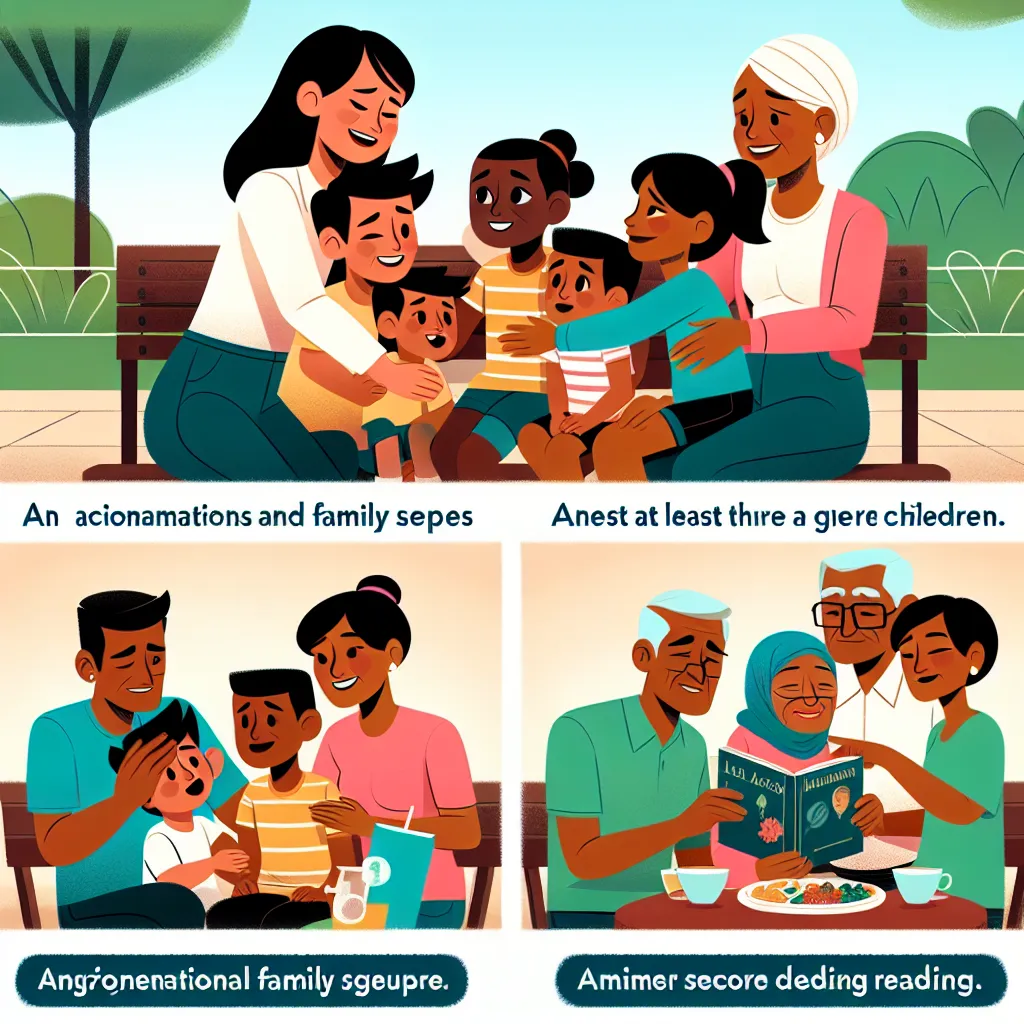Ask AI on The Internet
Question: Define the concept of “ubuntu” in your own words. (2) 1.2 Explain how ubuntu can underpin school, family and community collaboration. Provide an example to support your answer. (6) 1.3 Discuss the meaning of the following diagram. (6) 1.4 Several family structures are discussed in the study guide. Draw any three family structures and briefly describe each drawing in two or three sentences. (12) QUESTION 2 [30] 2.1 In your own words, describe what each of these principles means. Make one suggestion of how you can achieve each principle in your classroom. Principle 1 has been completed for you as an example. You must redraw this table in your answer sheet. (20) Principle Describe it in your own words How do we achieve this principle in class? 1. Parents, families, principals and teachers want the best for children. All parents and schools want the children to thrive and succeed in their schooling regardless of context. School staff and parents work together; communicate and collaborate to ensure children benefit from their education. 2. Children have the right to reach their full potential.
Certainly! Here’s a comprehensive outline to help you tackle each question: **1.1 Defining “ubuntu”** Ubuntu is a term from the Nguni Bantu language, which is often translated as "I am because we are." It emphasizes the idea of community interconnectedness, mutual care, and collective responsibility. Ubuntu underscores the fact that one’s well-being and identity are deeply linked to the well-being of others. **1.2 How ubuntu can underpin school, family, and community collaboration** Ubuntu’s principle of interconnectedness can foster a nurturing and collaborative environment in educational settings, family dynamics, and community interactions by encouraging respect, empathy, and collective responsibility. Example: In a school setting, implementing ubuntu can mean creating mentorship programs where older students help younger students. For instance, a “buddy system” can be established where high school students mentor elementary students. This not only helps the younger students academically and socially but also instills a sense of responsibility and community in the older students. **1.3 Analyzing the given diagram** *(Note: The specific diagram is missing here. However, I’ll provide a generic guideline on how to approach such tasks.)* 1. **Identify Key Components:** Break down the various elements included in the diagram. (e.g., arrows, shapes, labels). 2. **Understand Relationships:** Examine how different parts are interlinked or affect one another. 3. **Interpret the Message:** Deduce the broader significance or message the diagram conveys concerning school, family, and community collaboration. 4. **Practical Application:** Relate the interpreted message to real-life scenarios or existing models. [Example Interpretation] - If the diagram shows circles connecting “School,” “Family,” and “Community” with arrows pointing in a cyclic manner, it likely highlights the continuous and reciprocal relationship among these elements, emphasizing the full circle of support system. **1.4 Drawing and Descriptions of Family Structures** 1. **Nuclear Family** Drawing: A simple home with two parents and their children. Description: This structure consists of two parents (a mother and a father) and their biological or adopted children living together in one household. 2. **Extended Family** Drawing: A larger house or connected homes depicting parents, children, grandparents, and other relatives. Description: This includes not just the nuclear family but also other relatives such as grandparents, uncles, aunts, and cousins living in close proximity or the same household. 3. **Single-Parent Family** Drawing: One parent with children. Description: This family structure consists of one parent raising one or more children due to various reasons such as divorce, separation, or the death of the other parent. **QUESTION 2** **2.1 Describing Principles and Applying Them in the Classroom** | Principle | Describe it in your own words | How do we achieve this principle in class? | |------------------------------------------------|---------------------------------------------------------------------|----------------------------------------------------------------------------------| | 1. Parents, families, principals, and teachers want the best for children. | All parents and schools want the children to thrive and succeed in their schooling regardless of context. | School staff and parents work together; communicate and collaborate to ensure children benefit from their education. | | 2. Children have the right to reach their full potential. | Every child deserves an education that allows them to achieve their highest capabilities. | Implement differentiated instruction to cater to different learning needs and strengths. | **3. Parents and the wider family have a significant role in children’s learning.** Description: The involvement of parents and extended family members greatly influences a child's educational success. Suggestion: Organize regular parent-teacher conferences and workshops to equip families with tools to support learning at home. **4. Schools aim to create inclusive learning environments.** Description: Schools strive to provide a safe, supportive, and accommodating environment for all students. Suggestion: Integrate cultural awareness programs and adaptive learning tools to support diverse student needs. **5. Effective communication enhances school-family partnerships.** Description: Clear, open communication is critical to building strong relationships between schools and families. Suggestion: Establish multiple channels of communication such as newsletters, emails, and parent portals for regular updates. **6. Community resources can enhance educational experiences.** Description: Schools can leverage local community resources to enrich the educational environment. Suggestion: Create partnerships with local businesses and organizations to provide students with internships and real-world learning experiences. Ensure each principle is thoroughly explained in your own words and clearly demonstrate how each can be practically implemented in a classroom setting. I hope this detailed guide helps you craft thorough, thoughtful responses to each component of your assignment!
Think your answer is better than the AI's? Post it below.
Other Most Relevant Posts:
 Title: Exploring Educational Collaboration: A Deep Dive into Ubuntu, Family Structures, and School-Parent Partnerships
Title: Exploring Educational Collaboration: A Deep Dive into Ubuntu, Family Structures, and School-Parent Partnerships
 **Education Assessment Guide**
- **Overlap Between Home and School**
- **School Governing Body**
- **Parent Involvement**
- **D6 Communicator App**
- **Case Study Analysis**
- **Mind Map/Word Clo
**Education Assessment Guide**
- **Overlap Between Home and School**
- **School Governing Body**
- **Parent Involvement**
- **D6 Communicator App**
- **Case Study Analysis**
- **Mind Map/Word Clo
 "Exploring Family-School Partnership Dynamics: A Deep Dive into Parental Involvement and Engagement"
"Exploring Family-School Partnership Dynamics: A Deep Dive into Parental Involvement and Engagement"
Question Tags
If you want your question answered by an AI, click here.




Post your own comment: